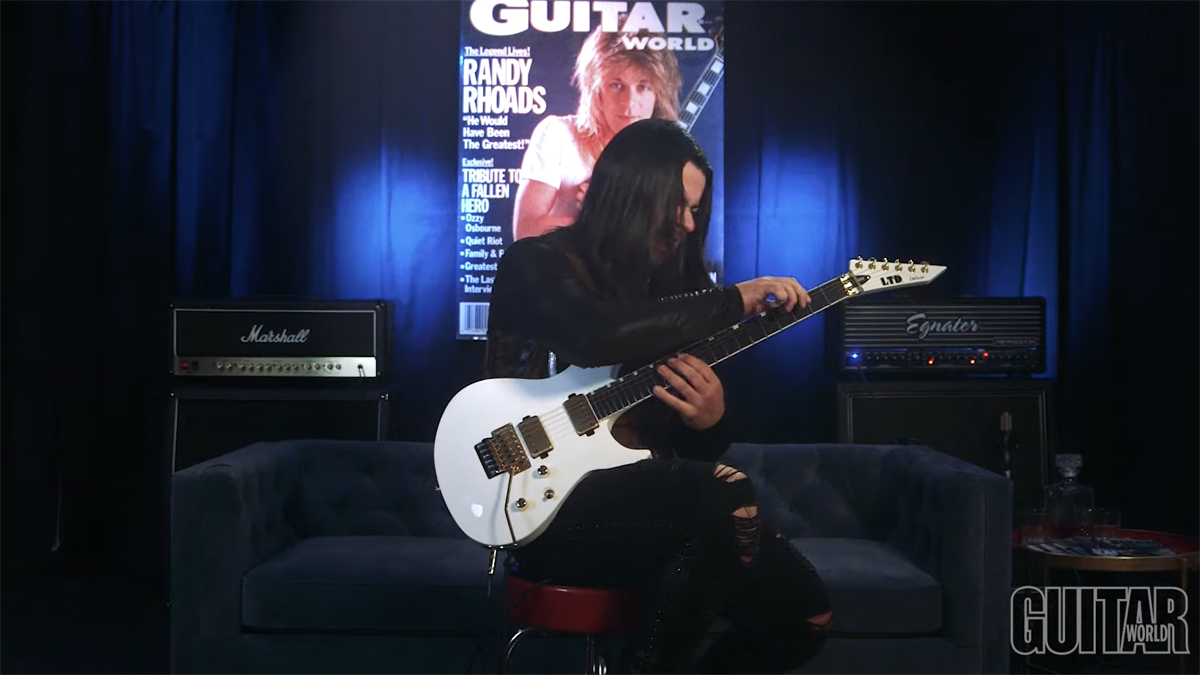
Earlier this year, 22-year-old Brazilian metal phenom Luís Kalil dropped Reverse Strike – an electrifying instrumental single that debuted his innovative reverse tapping technique.
Now, the electric guitar wunderkind has teamed up with Guitar World to give you an up-close look at the “door-opening” skill and demystify the logistics behind the topsy turvy taps.
Explaining how he first developed the reverse tapping technique, Kalil reflected, “My biggest goal as a guitar player from the beginning was to find my voice on the guitar, and I always wondered why some people sound unique and others don’t.
“I came to realize it always came down to how they connect notes and their ideas,” he continued. “This is what reverse tapping is about: it’s an alternative way to connect notes. It opens the door to new possibilities to connect notes, ideas and phrases.”
After a performance of Reverse Strike, Kalil dives straight into the nitty gritty, explaining that his reverse tapping technique lets his stronger left hand control complex higher register activity, while his weaker right hand plays a more supporting role – a key difference to regular tapping.
A breakdown of the main hook serves as an introduction into how this works in practice, but it’s the solo that highlights the true potential of reverse tapping. While the left hand plays the main melodic ideas via hammer-on and pull-offs, the right hand emphasizes certain motifs with mirroring low-end runs, executed using the index and second fingers.
Kalil also explains that palm-muting – or, perhaps more appropriately, forearm-muting – is paramount to an effective reverse tap sequence. Since your right hand is now operating further down the fretboard, the same hand can’t be used to control unwanted undertones risk-free. As such, the edge of the forearm comes into play to keep such sonic imperfections in check, ensuring a pristine delivery.
Get The Pick Newsletter
All the latest guitar news, interviews, lessons, reviews, deals and more, direct to your inbox!
Obviously, there’s a lot more to it than that, so if you fancy getting to grips with Kalil’s trick, you best watch the video above.
“I never settled with the idea that everything in metal and rock was already made,” Kalil concludes. “I’m always trying to dig new sounds and dig new stuff.
“Even though I’m a very classic guy,” he continued, “I also think there’s a lot to still discover in metal and rock guitar. This is my contribution.”

Matt is the GuitarWorld.com News Editor. He has a Masters in the guitar, a degree in history, and has spent the last 16 years playing everything from blues and jazz to indie and pop. When he’s not combining his passion for writing and music during his day job, Matt records for a number of UK-based bands and songwriters as a session musician.









